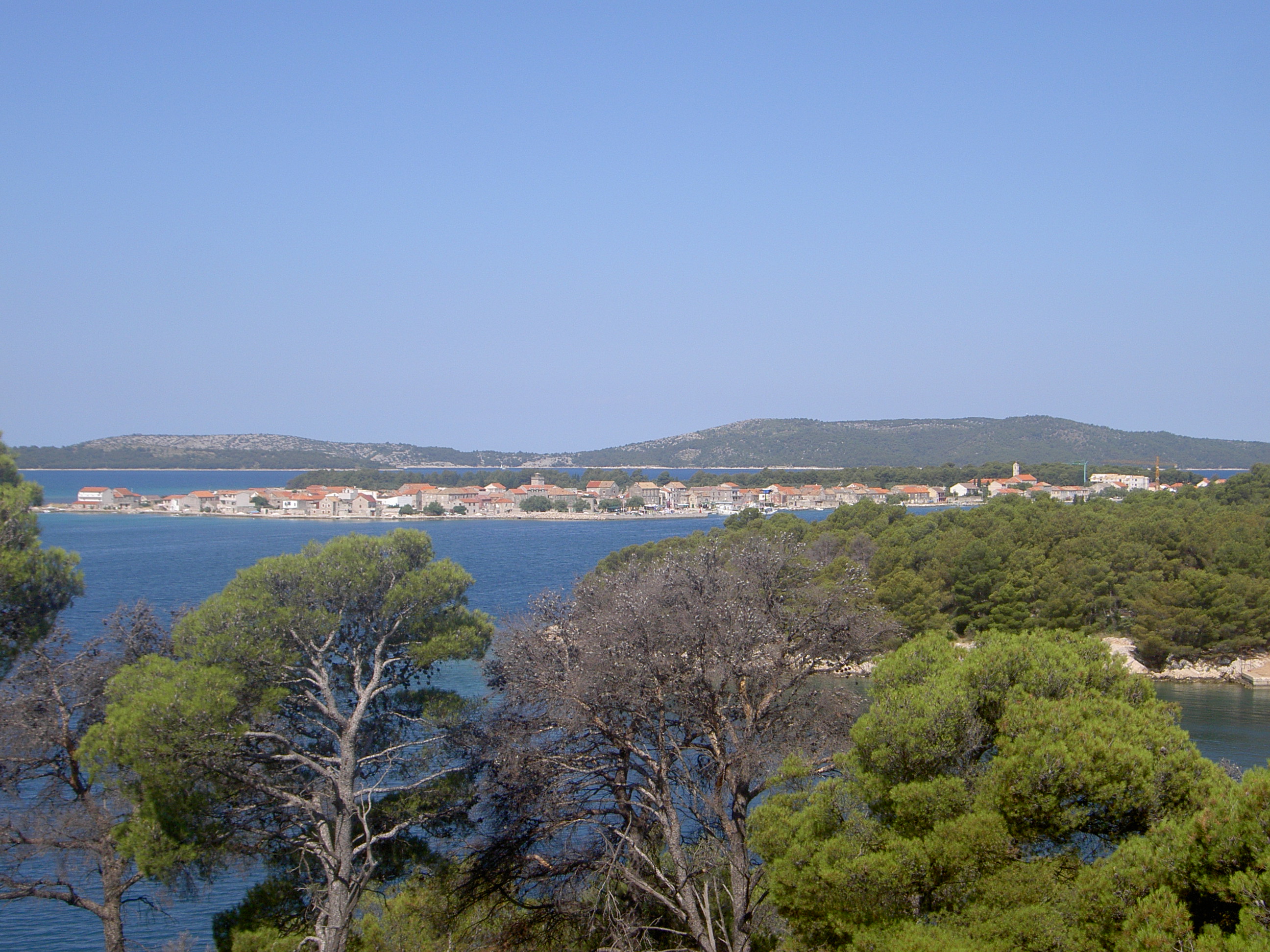- Krapanj
Infobox Islands
name = Krapanj

image caption =
image size =
locator
native name =
native name link = Croatian
nickname =
location =Adriatic sea
coordinates = coord|43|40|20|N|15|54|50|E|display=inline,title
archipelago =
total islands =
major islands =
area = convert|0.36|km2|abbr=on|lk=on
highest mount =
elevation = convert|1.5|m|abbr=on|lk=on
country = Croatia
country admin divisions title = County
country admin divisions = Šibenik-Knin
country capital city =
country largest city =
country largest city population =
country leader title =
country leader name =
population = 237
population as of = 2001
density =
ethnic groups =
additional info =Krapanj is an island of
Croatia in the central Dalmatian county of Šibenik-Knin.Krapanj is the smallest inhabited island of the
Adriatic Sea covering 0.36 km². It is also the most inhabited island (per square metre) and has the lowest elevation of 1.5 m above sea level. Krapanj is 300 m offshore at its closest point from the mainland town of Brodarica.History
Krapanj was founded by Toma Jurić, a nobleman from Šibenik and a descendant of the
Šubić family fromBribir . Jurić purchased the island in1436 from the Šibenik County with the intention of building aFranciscan church on the uninhabited island. Realising their father's dream after his death, Jurić's 4 sons completed The Holy Cross Church and monastery in1523 with blessings fromPope Eugene IV on one condition: only the Friars were to live and inhabit Krapanj.Krapanj came under the possession of the St. Jerome's province of
Dalmatia in the 16th century as theOttoman Empire fiercely invaded neighbouring lands. The Franciscans allowed people living on the neighbouring mainland to build their own settlement, southeast of the monastery who then united to defend themselves against the Turkish attack.Since the work of the Franciscan friars was closely connected to the inhabitants of the island, in
1652 , the monastery was given a parish and the friars began offering spiritual and other assistance to parishes on the mainland. The remains of the old church walls, in part, can be seen by the front door of the cloister. The church was expanded in1937 , and the wall bearing the consecration date (May 15, 1523) joins the new church building with the cloister.Art & Culture
The island of Krapanj's culture and traditions reflect the Dalmatian way of life. Hard work, good food and a healthy lifestyle embodies the seaside rock houses and tiny side-streets. Krapanj takes pride in its origins of deep sea diving and generally personifies a seafaring culture.
Krapanj is not on the tourist map and generally very few tourists visit the tiny island in the peak tourism months of June, July and August. A main factor to this is the no vehicles policy the island has enforced. As a result, the island has kept many of the old world traditions that add a unique charm to the island.
The art of producing
wine ("vino"),olive oil ("maslinovo ulje"),rakija andsea sponge ("spužve") are traditions that date back to pre-history but are still extremely evident in modern day Krapanj. Food is generally seafood, caught by local fisherman and distributed locally.Krapanj holds a host of cultural antiquities in the monastery including "The Last Supper" by the 16th century Italian artist Francesco da Santa Croce and a
renaissance painting titled "The Black Madonna On The Throne".The biggest event on the island's calendar is the annual Krapljanska Fešta. The day-long festival is held on 2 August and celebrates Gospe od Anđela (Our Lady of the Angels). Thousands of people gather on the island for the cultural feast of good food, good wine and centuries of culture. The locals annually proclaim "a night the island almost sank".
The divers of Krapanj
Krapanj has a rich history in the harvesting and selling of
sea sponge s. Antun from Crete introduced Krapanj's inhabitants to sea sponge gathering and processing over 300 years ago. For many years, diving for these sponges has been the major income for Krapanj families, earning them the title of "Spužvari" (sponge vendors).Sponges from this area are extremely well received throughout the world for their high quality and aesthetic beauty. The cosmetic market has in recent years opened the market for Krapanj sponges on an international scale.
The traditions of sea sponge diving has in latter days given rise to
scuba diving ,free diving andspearfishing professionals from Krapanj.The Krapanj monastery museum permanently exhibits a show on sea sponge diving.
Gallery
External links
* [http://krapanj.com krapanj.com Krapanj]
*Šibenik
*Dalmatia
*Croatia
*Illyria
Wikimedia Foundation. 2010.
